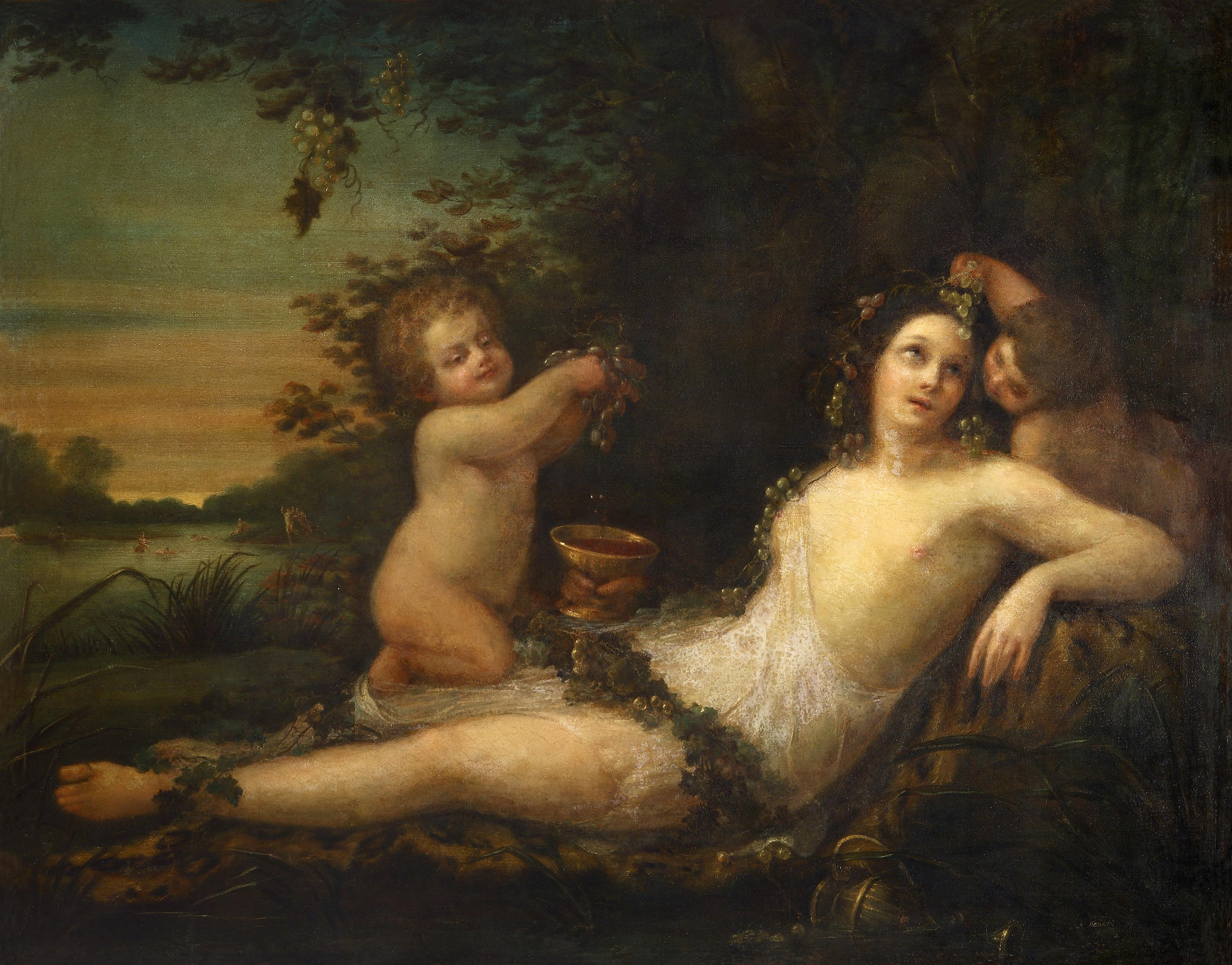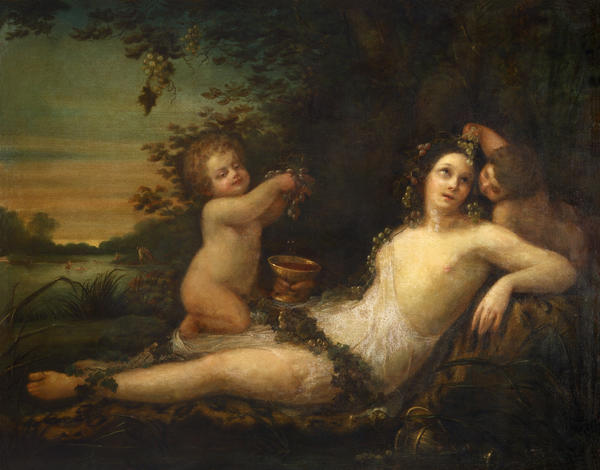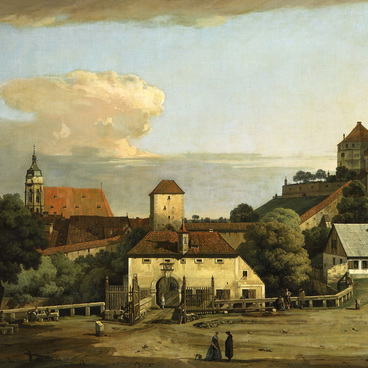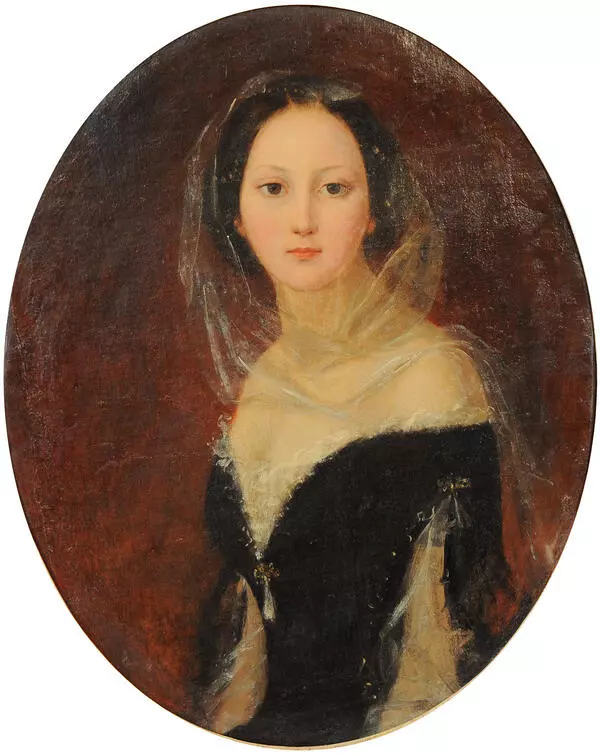Nikolai Apollonovich Maykov was born in Moscow. In his young years, he studied in St. Petersburg in the Second Cadet Corps. But he did finish this institution because of the Patriotic War of 1812. Like many of his companions, Maykov before his graduation was given an officer rank in the active army and sent to the Bagration Corps. On the Borodinsky field, Maykov was wounded, after which he was released from active duty for medication and stayed at his father 's estate. There he began practicing drawing and continued to do that upon his return to the army. With the army, Maykov went through Poland, Germany, reached Paris. In his spare time wherever the army stopped the artist wrote sketches, military scenes, portraits of fellow soldiers. According to family legend, during the regiment 's stay in Paris, Maykov first purchased oil paints and spent much time in the Louvre.
After the service, Maykov wanted to go to Italy to study painting. However, obeying his father, Major Maykov quit the army and returned to Moscow. Drawing the attention of art lovers, Maykov soon became a popular artist. Emperor Nicholas I instructed the artist to paint a number of images for Trinity-Izmailovsky Cathedral. Later Maykov painted images for the iconostases of Isaac Cathedral and the small church of the Winter Palace. In 1835, he was awarded the title of academician of painting. However, the favorite themes for Maykov’s paintings were images of female heads, nude beauties, sleeping women.
In the painting, Maykov depicted a Bacchante. Bacchante are priestesses of the wine-making god Bacchus. They accompanied God and also participated in celebrations — Bacchante. During the holiday the wine was pouring down, which excited and liberated the participants.
In the center of the painting, the goddess is resting on cloth in half-upright position against the background of thick greens. The goddess’s light clothes barely cover the body. Next to Bacchante, the artist placed two wingless angels — putti, one of them is pouring foaming wine into the gold cup of the goddess. On the head of Bacchante is a veil made of intertwined white grape twigs. There’re real participants of the Bacchante in the background at the lake.
After the service, Maykov wanted to go to Italy to study painting. However, obeying his father, Major Maykov quit the army and returned to Moscow. Drawing the attention of art lovers, Maykov soon became a popular artist. Emperor Nicholas I instructed the artist to paint a number of images for Trinity-Izmailovsky Cathedral. Later Maykov painted images for the iconostases of Isaac Cathedral and the small church of the Winter Palace. In 1835, he was awarded the title of academician of painting. However, the favorite themes for Maykov’s paintings were images of female heads, nude beauties, sleeping women.
In the painting, Maykov depicted a Bacchante. Bacchante are priestesses of the wine-making god Bacchus. They accompanied God and also participated in celebrations — Bacchante. During the holiday the wine was pouring down, which excited and liberated the participants.
In the center of the painting, the goddess is resting on cloth in half-upright position against the background of thick greens. The goddess’s light clothes barely cover the body. Next to Bacchante, the artist placed two wingless angels — putti, one of them is pouring foaming wine into the gold cup of the goddess. On the head of Bacchante is a veil made of intertwined white grape twigs. There’re real participants of the Bacchante in the background at the lake.





